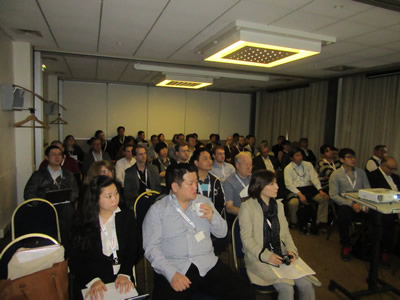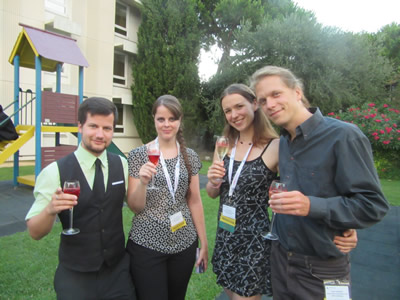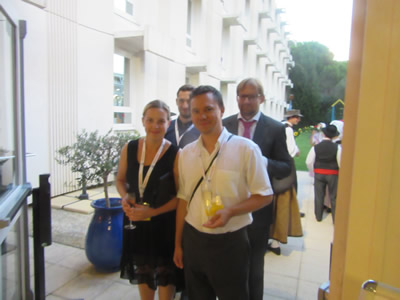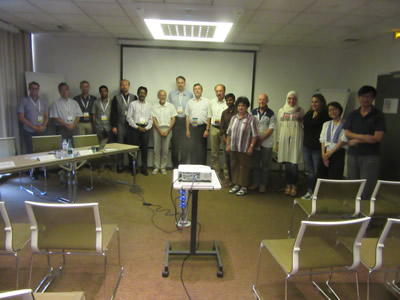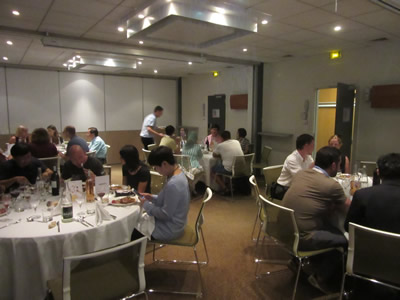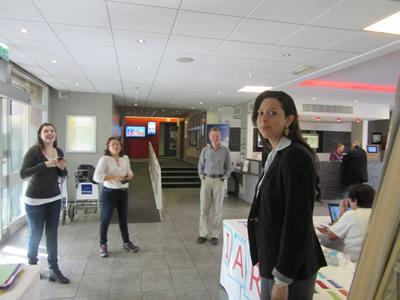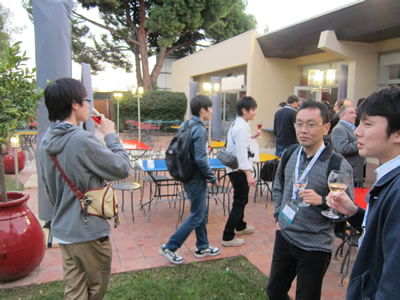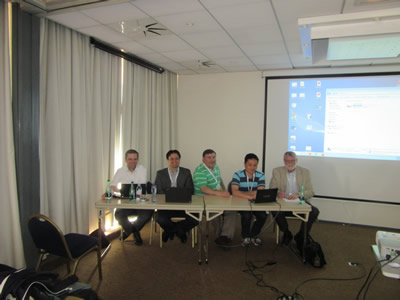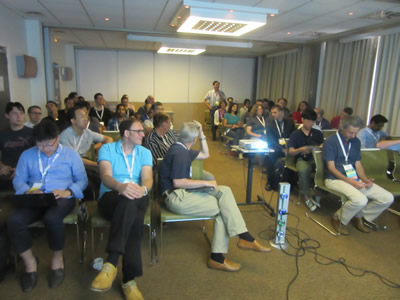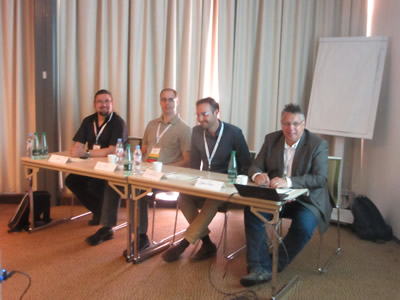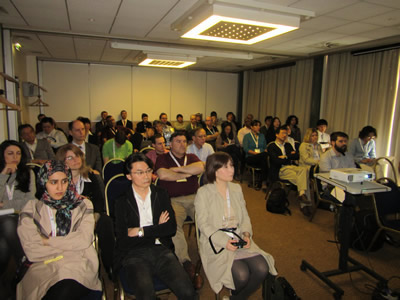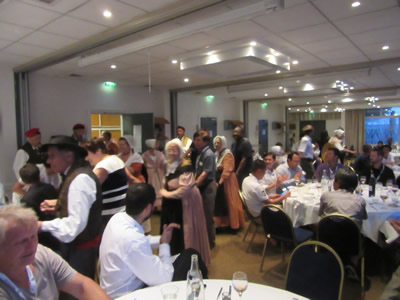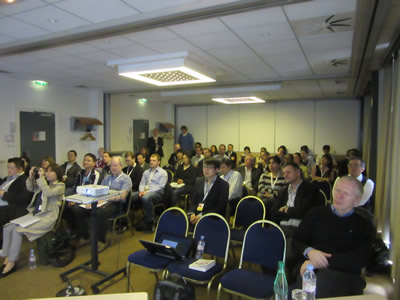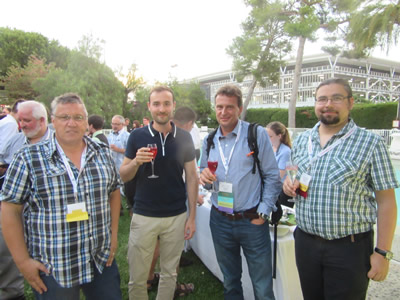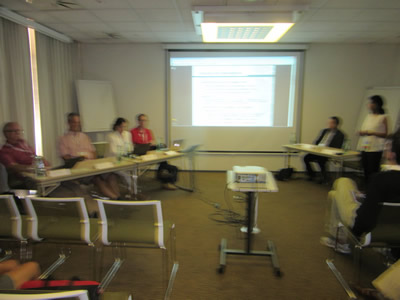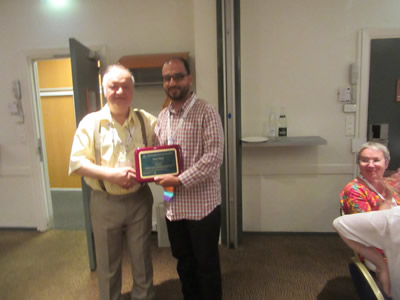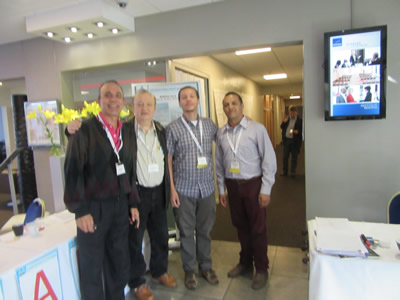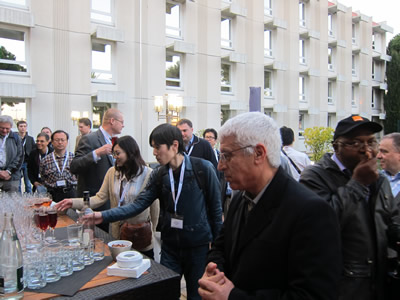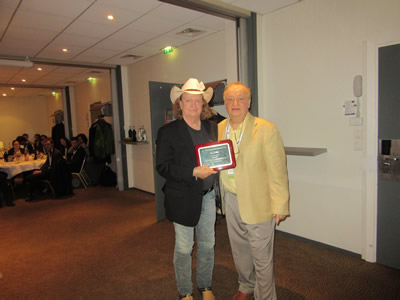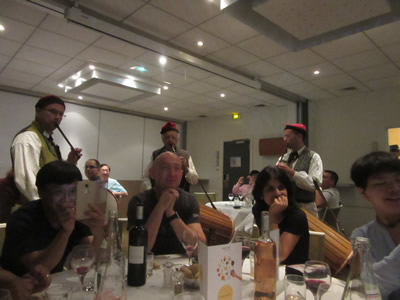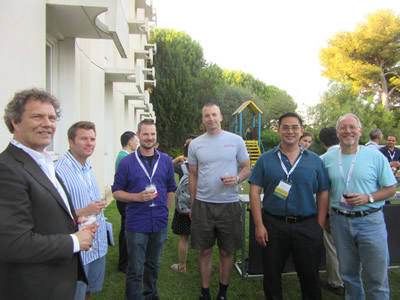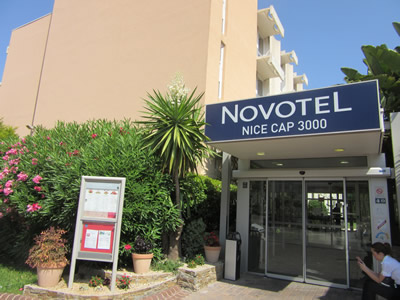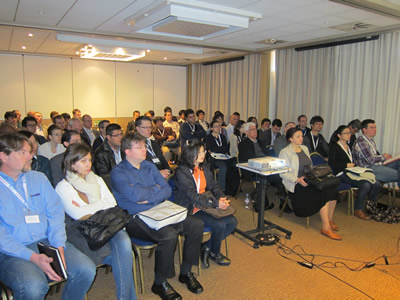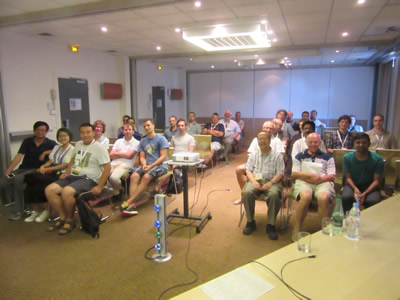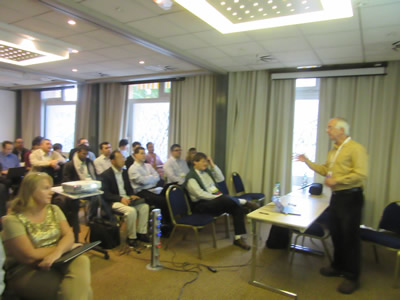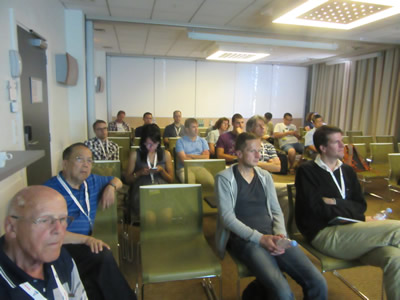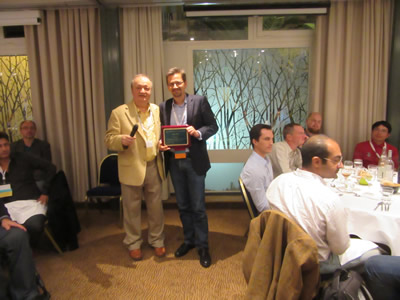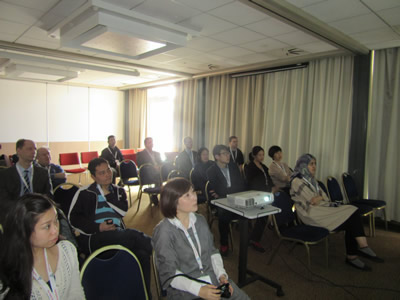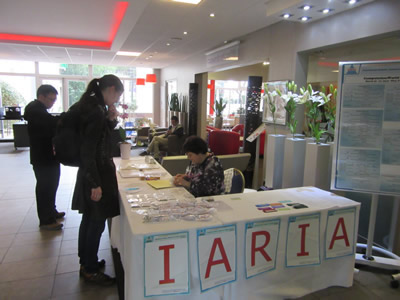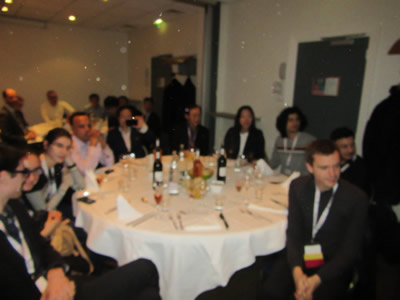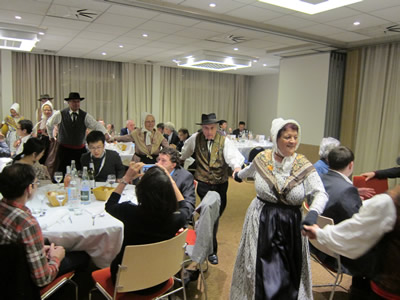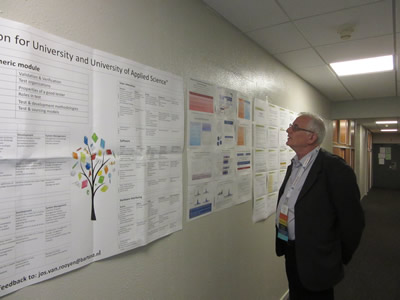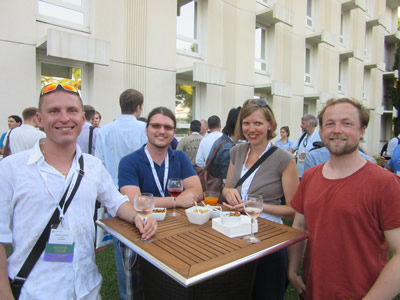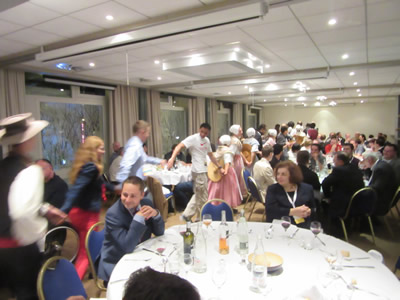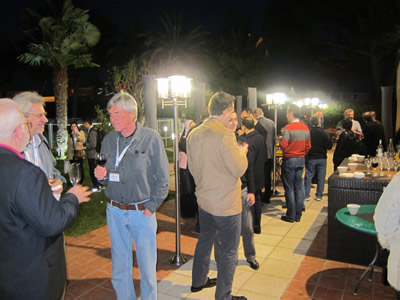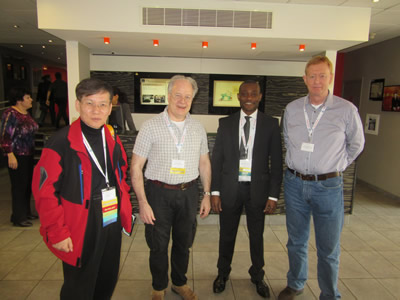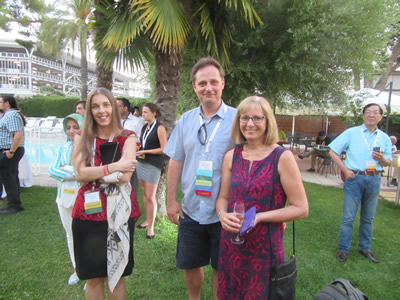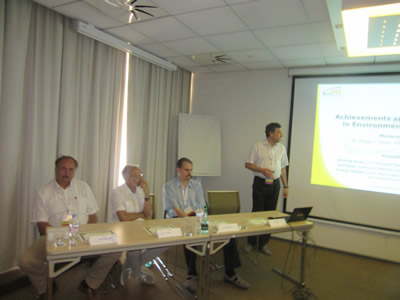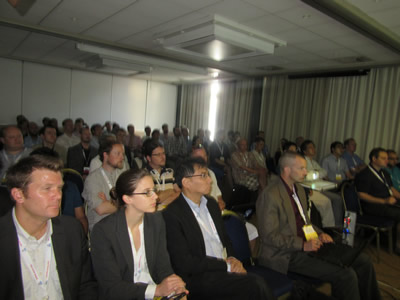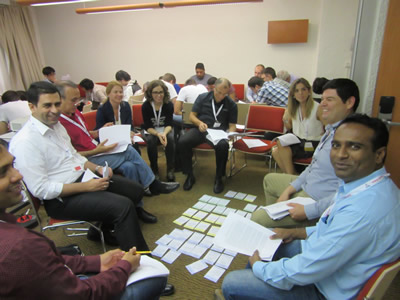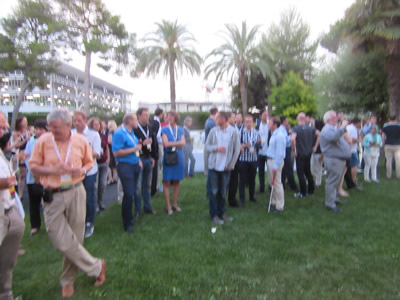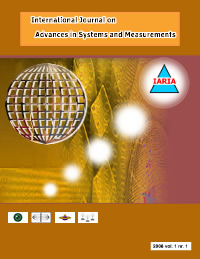ICONS 2025 - The Twentieth International Conference on Systems
May 18, 2025 - May 22, 2025
ICONS 2025: Call for Papers
Onsite and Online Options: In order to accommodate various situations, we are offering the option for either physical presence or virtual participation (pdf slides or pre-recorded videos).
The International Conference on Systems continues a series of events covering a broad spectrum of topics. The conference covers fundamentals on designing, implementing, testing, validating and maintaining various kinds of software and hardware systems. Several tracks are proposed to treat the topics from theory to practice, in terms of methodologies, design, implementation, testing, use cases, tools, and lessons learnt.
In the last years, new system concepts have been promoted and partially embedded in new deployments. Anticipative systems, autonomic and autonomous systems, self-adapting systems, or on-demand systems are systems exposing advanced features. These features demand special requirements specification mechanisms, advanced behavioral design patterns, special interaction protocols, and flexible implementation platforms. Additionally, they require new monitoring and management paradigms, as self-protection, self-diagnosing, self-maintenance become core design features.
The design of application-oriented systems is driven by application-specific requirements that have a very large spectrum. Despite the adoption of uniform frameworks and system design methodologies supported by appropriate models and system specification languages, the deployment of application-oriented systems raises critical problems. Specific requirements in terms of scalability, real-time, security, performance, accuracy, distribution, and user interaction drive the design decisions and implementations.
This leads to the need for gathering application-specific knowledge and develop particular design and implementation skills that can be reused in developing similar systems.
Validation and verification of safety requirements for complex systems containing hardware, software and human subsystems must be considered from early design phases. There is a need for rigorous analysis on the role of people and process causing hazards within safety-related systems; however, these claims are often made without a rigorous analysis of the human factors involved. Accurate identification and implementation of safety requirements for all elements of a system, including people and procedures become crucial in complex and critical systems, especially in safety-related projects from the civil aviation, defense health, and transport sectors.
Fundamentals on safety-related systems concern both positive (desired properties) and negative (undesired properties) aspects. Safety requirements are expressed at the individual equipment level and at the operational-environment level. However, ambiguity in safety requirements may lead to reliable unsafe systems. Additionally, the distribution of safety requirements between people and machines makes difficult automated proofs of system safety. This is somehow obscured by the difficulty of applying formal techniques (usually used for equipment-related safety requirements) to derivation and satisfaction of human-related safety requirements (usually, human factors techniques are used).
We solicit both academic, research, and industrial contributions. We welcome technical papers presenting research and practical results, position papers addressing the pros and cons of specific proposals, such as those being discussed in the standard fora or in industry consortia, survey papers addressing the key problems and solutions on any of the above topics short papers on work in progress, and panel proposals.
Industrial presentations are not subject to the format and content constraints of regular submissions. We expect short and long presentations that express industrial position and status.
Tutorials on specific related topics and panels on challenging areas are encouraged.
The topics suggested by the conference can be discussed in term of concepts, state of the art, research, standards, implementations, running experiments, applications, and industrial case studies. Authors are invited to submit complete unpublished papers, which are not under review in any other conference or journal in the following, but not limited to, topic areas.
All topics and submission formats are open to both research and industry contributions.
ICONS 2025 conference tracks:
Systems theory and practice
Systems design methodologies and techniques; Formal methods to specify systems’ behavior; Online and offline systems; Open and closed systems; Centralized and distributed systems; Proactive and reactive systems; System robustness; Systems scalability; Fault-tolerant systems; Feedback systems; High-speed systems; Delay tolerant systems; Real-time systems; Neuromorphic systems; Cognitive systems ; Augmented reality systems; Spiking neural networks and systems
Systems engineering
Systems requirements;
Systems modeling;
Systems development lifecycle;
System-of-systems;
Systems ergonomics;
Subsystem interactions;
Systems decomposition;
Systems integration
Intelligent and vehicular transportation systems
Sensor-based intelligent systems; Intelligent systems and wireless applications; Intelligent transport systems; Intelligent forecasting applications;
Intelligent human-computer interaction transportation systems; Information collection and dissemination; Mobility and vehicular traffic models; Vehicle-to-vehicle, vehicle-to-roadside communications; Intra-vehicle communications; Vehicle-to-Internet communications; Driver-less transportation; Safeness in transportation systems; Analytical and simulation techniques; Experimental systems and field operational testing; Recent standardization efforts and problems
System Instrumentation
Metering embedded sensors;
Composing multi-scale measurements;
Monitoring instrumentation;
Smart sensor-based systems;
Calibration and self-calibration systems;
Instrumentation for prediction systems
Embedded systems and systems-on-the-chip
Real-time embedded systems
Programming embedded systems;
Controlling embedded systems;
High speed embedded systems;
Designing methodologies for embedded systems;
Performance on embedded systems;
Updating embedded systems;
Wireless/wired design of systems-on-the-chip;
Testing embedded systems;
Technologies for systems processors;
Migration to single-chip systems;
Micro/nano structures and systems
Advanced embedded systems and applications/services
Advances in designing methodologies & tools for embedded systems; Platform-based design for embedded systems; Software advances for embedded systems; Dependable/secure embedded systems; Context-related approaches (context-based, context-sensitive, context-aware, etc); Synchronization and time adaptation in embedded systems; Systems-on-Chip embedded systems and applications; On-chip signal conversion for Embedded Systems; Networked Sensor devices and systems; Industrial embedded systems and applications; Simulation for embedded systems; Power-aware embedded systems; Real-time embedded systems; Virtualization and embedded systems; Internet of Things (IoT) impact on embedded systems; Embedded systems and embedded computation models; Testing embedded systems; Safety and security in embedded systems; Performance analysis of embedded systems; Mission-critical features for embedded systems; Real-life embedded systems use cases; Dedicated devices and applications; Design mobile services for embedded systems; Healthcare dedicated embedded systems; Sensing and remote sensing embedded systems; Embedded systems for automation and control of residential and industrial buildings
Target-oriented systems [emulation, simulation, prediction, etc.]
Information systems;
Real-time systems;
Software systems;
Hardware systems;
Emulation systems;
Simulation systems Prediction systems
Specialized systems [sensor-based, mobile, multimedia, biometrics, etc.]
Sensor-based systems;
Biometrics systems;
Mobile and fixed systems;
Ubiquitous systems;
Nano-technology-based systems;
Multimedia systems
Validation systems
Diagnosis assistance systems; Test systems; Validation systems; Performance measurement systems; Maintenance systems
Security and protection systems
Security systems;
Vulnerability detecting systems;
Intrusion detection systems
Intrusion avoidance systems;
Presence detection systems;
Monitoring systems;
Management systems;
Alert systems;
Defense systems;
Emergency systems
Advanced systems [expert, tutoring, self-adapting, interactive, etc.]
Expert systems;
Tutoring systems;
Highly interactive systems;
Anticipative systems;
On-demand systems;
GRID systems;
Autonomic systems;
Autonomous systems;
Self-adapting systems;
Adjustable autonomic systems;
High performance computing systems;
Mission critical systems
Application-oriented systems [content, eHealth, radar, financial, vehicular, etc.]
Web-cashing systems;
Content-distributed systems;
Accounting and billing systems;
E-Health systems;
E-Commerce systems;
Radar systems;
Navigation systems;
Systems for measuring physical quantities;
Earthquake detection and ranking systems;
Financial systems;
Robotics systems;
Vehicular systems;
Entertainment systems;
Gaming systems;
Speech recognition system
IT Systems
IT service management; IT Infrastructure management; IT service desk; Service support and delivery; Service strategy; Service design; Service transition; Service operation; Continual service improvement
Safety in industrial systems
Fundamentals on system safety;
Safety of software systems and software engineering;
Safety requirements;
Safety for critical systems;
Engineering for system robustness and reliability;
Control of mission critical systems;
Safety-oriented system design;
Human tasks and error models;
Hazard analysis;
Cost and effectiveness of system safety;
Verification and validation of safety;
Safety tools;
Evaluation of safety data, and mitigation and prevention strategies;
Safety control and management;
System Safety Implementation Guidelines and Standards;
Transferring safety knowledge;
Metrics for Risk Assessment;
Contingency Planning and Occurrence Reporting;
Preparedness Activities;
Industry specific safety systems (Medical devices, Aerospace, Chemical industry, Nuclear power plants, Public health, Biological Safety)
Complex systems
Theory of complex systems;
Ontologies for complex systems;
Chaos and complexity;
Design and integrate complex systems;
Complexity and simulation;
Simulation and datamining;
Artificial intelligence and soft computing in complex systems;
Multi-agent based simulation;
Systems of systems;
Intelligent agent architectures;
Evolutionary programming;
Uncertainty reduction and classification;
Monitoring and managing complex systems;
Case studies of complex systems [vehicular, avionic, health, emergency, sensing, etc.];
Industrial systems [robotics, production, accounting and billing, e-commerce, etc.]; energy systems [energy transportation and storage; green energy (solar, eolian, hydro, etc.), mixed energy sources]
Computer vision and computer graphics
Fundamental algorithms for computer graphics and computer vision: Model representation and simplification; Parametric curves and surfaces; Illumination techniques; Colors and color systems; Virtual and augmented reality, haptic systems; Human-computer interaction; Real time rendering; Image processing, image reconstruction; Pattern recognition; 3D scene reconstruction; Segmentation; Motion detection; Scientific and technical visualization; Medical imaging; Information visualization; 3D TV; Mobile graphics and vision system; Industrial application of computer graphics and vision
Deadlines:
Submission | Feb 21, 2025 |
Notification | Mar 24, 2025 |
Registration | Apr 05, 2025 |
Camera ready | Apr 13, 2025 |
Deadlines differ for special tracks. Please consult the conference home page for special tracks Call for Papers (if any).
INSTRUCTION FOR THE AUTHORS
Authors of selected papers will be invited to submit extended versions to one of the IARIA Journals.
Publisher: XPS (Xpert Publishing Services)
Archived: ThinkMindTM Digital Library (free access)
Prints available at Curran Associates, Inc.
How to submit to appropriate indexes.
Only .pdf or .doc files will be accepted for paper submission. All received submissions will be acknowledged via an automated system.
Contribution types
- regular papers [in the proceedings, digital library]
- short papers (work in progress) [in the proceedings, digital library]
- ideas: two pages [in the proceedings, digital library]
- extended abstracts: two pages [in the proceedings, digital library]
- posters: two pages [in the proceedings, digital library]
- posters: slide only [slide-deck posted on www.iaria.org]
- presentations: slide only [slide-deck posted on www.iaria.org]
- demos: two pages [posted on www.iaria.org]
FORMATS
Only .pdf or .doc files will be accepted for paper submission. All received submissions will be acknowledged via an automated system.
Final author manuscripts will be 8.5" x 11", not exceeding 6 pages; max 4 extra pages allowed at additional cost.
Helpful information for paper formatting for MS Word can be found here.
There is a community provided LaTeX template: the CTAN package iaria (with full IARIA formatting rules, including IARIA citation style, but for providing citation style it is tightly bound to pdflatex+biblatex+biber). In addition, there is also iaria-lite (not bound to pdflatex+biblatex+biber, but compatible with any TeX stack; thus, it cannot provide the IARIA citation formattings, but only the titlepage and content-related IARIA formatting rules). Based on the iaria package, there is a minimal working example as Overleaf template. When you are using the LaTeX templates, please still adhere to the additional editorial rules.
Slides-based contributions can use the corporate/university format and style.
Your paper should also comply with the additional editorial rules.
Once you receive the notification of contribution acceptance, you will be provided by the publisher an online author kit with all the steps an author needs to follow to submit the final version. The author kits URL will be included in the letter of acceptance.
We would recommend that you should not use too many extra pages, even if you can afford the extra fees. No more than 2 contributions per event are recommended, as each contribution must be separately registered and paid for. At least one author of each accepted paper must register to ensure that the paper will be included in the conference proceedings and in the digital library, or posted on the www.iaria.org (for slide-based contributions).
CONTRIBUTION TYPE
Regular Papers (up to 6-10 page article -6 pages covered the by regular registration; max 4 extra pages allowed at additional cost- ) (oral presentation)
These contributions could be academic or industrial research, survey, white, implementation-oriented, architecture-oriented, white papers, etc. They will be included in the proceedings, posted in the free-access ThinkMind digital library and sent for indexing. Please submit the contributions following the instructions for the regular submissions using the "Submit a Paper" button and selecting the appropriate contribution type. 12-14 presentation slides are suggested.
Short papers (work in progress) (up to 4 pages long) (oral presentation)
Work-in-progress contributions are welcome. These contributions represent partial achievements of longer-term projects. They could be academic or industrial research, survey, white, implementation-oriented, architecture-oriented, white papers, etc. Please submit the contributions following the instructions for the regular submissions using the "Submit a Paper" button and selecting the contribution type as work in progress. Contributors must follow the conference deadlines, describing early research and novel skeleton ideas in the areas of the conference topics. The work will be published in the conference proceedings, posted in the free-access ThinkMind digital library and sent for indexing. For more details, see the Work in Progress explanation page. 12-14 presentation slides are suggested.
Ideas contributions (2 pages long) (oral presentation)
This category is dedicated to new ideas in their very early stage. Idea contributions are expression of yet to be developed approaches, with pros/cons, not yet consolidated. Ideas contributions are intended for a debate and audience feedback. Please submit the contributions following the instructions for the regular submissions using the "Submit a Paper" button and selecting the contribution type as Idea. Contributors must follow the conference deadlines, describing early research and novel skeleton ideas in the areas of the conference topics. The work will be published in the conference proceedings, posted in the free-access ThinkMind digital library and sent for indexing. For more details, see the Ideas explanation page. 12-14 presentation slides are suggested.
Extended abstracts (2 pages long) (oral presentation)
Extended abstracts summarize a long potential publication with noticeable results. It is intended for sharing yet to be written, or further on intended for a journal publication. Please submit the contributions following the instructions for the regular submissions using the "Submit a Paper" button and selecting the contribution type as Extended abstract. Contributors must follow the conference deadlines, describing early research and novel skeleton ideas in the areas of the conference topics. The work will be published in the conference proceedings, posted in the free-access ThinkMind digital library and sent for indexing. 12-14 presentation slides are suggested.
Posters (paper-based, two pages long) (oral presentation)
Posters are intended for ongoing research projects, concrete realizations, or industrial applications/projects presentations. The poster may be presented during sessions reserved for posters, or mixed with presentation of articles of similar topic. A two-page paper summarizes a presentation intended to be a POSTER. This allows an author to summarize a series of results and expose them via a big number of figures, graphics and tables. Please submit the contributions following the instructions for the regular submissions using the "Submit a Paper" button and selecting the contribution type as Poster Two Pages. Contributors must follow the conference deadlines, describing early research and novel skeleton ideas in the areas of the conference topics. The work will be published in the conference proceedings, posted in the free-access ThinkMind digital library and sent for indexing. 8-10 presentation slides are suggested. Also a big Poster is suitable, used for live discussions with the attendees, in addition to the oral presentation.
Posters (slide-based, only) (oral presentation)
Posters are intended for ongoing research projects, concrete realizations, or industrial applications/projects presentations. The poster may be presented during sessions reserved for posters, or mixed with presentation of articles of similar topic. The slides must have comprehensive comments. This type of contribution only requires a 8-10 slide-deck. Please submit the contributions following the instructions for the regular submissions using the "Submit a Paper" button and selecting the contribution type as Poster (slide-only). The slide-deck will be posted, post-event, on www.iaria.org.
8-10 presentation slides are suggested. Also a big Poster is suitable, used for live discussions with the attendees, additionally to the oral presentation.
Presentations (slide-based, only) (oral presentation)
These contributions represent technical marketing/industrial/business/positioning presentations. This type of contribution only requires a 12-14 slide-deck. Please submit the contributions following the submission instructions by using the "Submit a Paper" button and selecting the contribution type as Presentation (slide-only). The slide-deck will be posted, post-event, on www.iaria.org.
12-14 presentation slides are suggested.
Demos (two pages) [posted on www.iaria.org]
Demos represent special contributions where a tool, an implementation of an application, or a freshly implemented system is presented in its alfa/beta version. It might also be intended for thsoe new application to gather the attendee opinion. A two-page summary for a demo is intended to be. It would be scheduled in special time spots, to ensure a maximum attendance from the participants. Please submit the contributions following the submission instructions by using the "Submit a Paper" button and selecting the contribution type as Demos. The Demos paper will be posted, post-event, on www.iaria.org.
Tutorial proposals
Tutorials provide overviews of current high interest topics. Proposals should be for 2-3 hour long. Proposals must contain the title, the summary of the content, and the biography of the presenter(s). The tutorial slide decks will be posted on the IARIA site.
Please send your proposals to tutorial proposal
Panel proposals
The organizers encourage scientists and industry leaders to organize dedicated panels dealing with controversial and challenging topics and paradigms. Panel moderators are asked to identify their guests and manage that their appropriate talk supports timely reach our deadlines. Moderators must specifically submit an official proposal, indicating their background, panelist names, their affiliation, the topic of the panel, as well as short biographies. The panel slide deck will be posted on the IARIA site.
Please send your proposals to panel proposal
